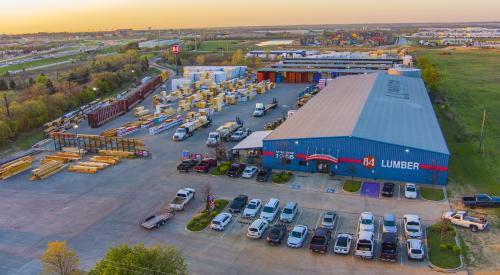The TEAM with the best players wins! Pretty simple plan, isn’t it? In recent years, builders have experienced shortages in drywall, concrete, lumber and other essential building materials. Many builders also have faced labor shortages among the skilled trades. A number of markets are encountering a shortage of good, available land. In the future, none of these shortages will match-or be as critical-to long term success as the shortage of talent available to home building organizations. This talent dearth in the industry is caused by two factors: demographics and culture.
| It has always been hard to put together a superior team. It will be increasingly difficult in the future. |
The Demographics
Home building organizations generally are managed by people in the 35 to 45-year-old age group. The number of people in this age bracket in the United States begins to decline this year and continues to decline over the next 15 years. If we assume the economy will grow at 2% to 4% over the next 15 years, this country will suffer a 30% to 50% shortfall in talent, depending on the rate of economic growth.
The Culture
Few managers in home building and the construction trades are encouraging their children to follow them in this business. In a recent meeting with 35 managers of an Ohio home builder, the question was asked, "How many of you want your children to go into the home building business?" One-only one-manager raised her hand.
The same question was asked this past year at the NAHB convention and the Pacific Coast Builders Conference, and the responses were similar. Very few children are being encouraged to become builders, construction managers, superintendents or roofers. Instead, today’s best and brightest talents are being directed towards computers, technology, information systems and emerging industries.
Let’s face facts. Companies with large physical assets are being devalued while those with brain power, innovation and speed are skyrocketing in value. A few years ago, none of us could have imaged Sears, Chevron, Union Carbide and Goodyear would be regarded as so irrelevant, their stocks dropped from the Dow Jones Industrial Average and replaced by Intel, Home Depot, Microsoft and SBC Communications. These "smart" companies are scrambling for the best talent.
New Battlefront
So, what does all this mean to the home builder? Typically, recruiting and hiring within the industry has been the method preferred by most builders. Some have ventured outside the industry to bring in people with diverse backgrounds, especially in technology. As the availability of these people is on the decline, the builders who expect to stay in business will require a different strategy if they want to continue to grow their businesses.
Starting now, not next year, home builders will need to concentrate on a new battlefront. They will need to fight for people just as they have had to fight for land. The magnitude of this problem is already being felt. Many medium- and large-volume builders currently have opportunities to grow if they only had the talent to process the work and manage the growth. Unfortunately, few builders are in the position of having an available pool of talent.
Capital and opportunities are plentiful for the few builders who anticipated today’s tight labor market and developed their own talent. Search firms have plenty of assignments, but very few candidates. Stories are being told about paying signing bonuses in order to hire employees and trade contractors. What is a phenomenon today will become the norm in the future.
A New Norm
For a builder to continue to succeed, it will no longer be possible to have average or okay people. It will be necessary to recruit and hire only the very best. In a recent analysis of sales teams, we divided the teams into four groups (quartiles) based upon productivity. The sales people in the top quartile contributed $1.2 million more to the builder’s gross profits when compared to those in the bottom quartile! Furthermore, the top producers had fewer problems than those on the bottom, required less management time and had higher buyer satisfaction ratings.
The economy has been great for builders over the past few years. Most builders are "making their numbers." We believe these numbers are often compromised and too low. If builders had teams of superior people, the results would be startling. Pre-tax profits would consistently be in double-digits as a percentage of revenues. This is achievable. Builders in very competitive markets are doing this today and have done it historically. This opportunity begins with better recruiting and hiring practices and being intolerant of mediocrity. We cannot depend on our best players to save the day.
It has always been hard to put together a superior team. It will be increasingly difficult in the future. The demographics and the culture are working against all of us. Unless your plan is to downsize, the search for talent should be a continuing topic at management meetings. Each builder and manager should have recruiting and hiring objectives and a written plan to increase per person productivity across the board.
Recruiting efforts must be ongoing and constant. Every manager should have a minimum of eight to 10 prospective candidates for each position. None of us has any idea how long our current employees will be with us. In fact, we rarely get more than two weeks notice when someone quits. If the manager does not have an inventory of candidates, he or she will not have the privilege of selectivity and will compromise on the hiring decision.
The hiring process must involve multiple interviews, as we have all been fooled by "first impressions" before. Reference checking, to gain third party input, should be mandatory and references should be networked to gain information from people not chosen by the candidate. The hiring decision should be based upon comparing the candidate’s background and behavior against a written job description, and these are only the minimal requirements.
We will all need to build and sell homes with fewer people who produce more in the future. We will need to create organizations that attract more than their share of the exceptional people. The battle for talent has begun, and the team with the best players wins every time.










